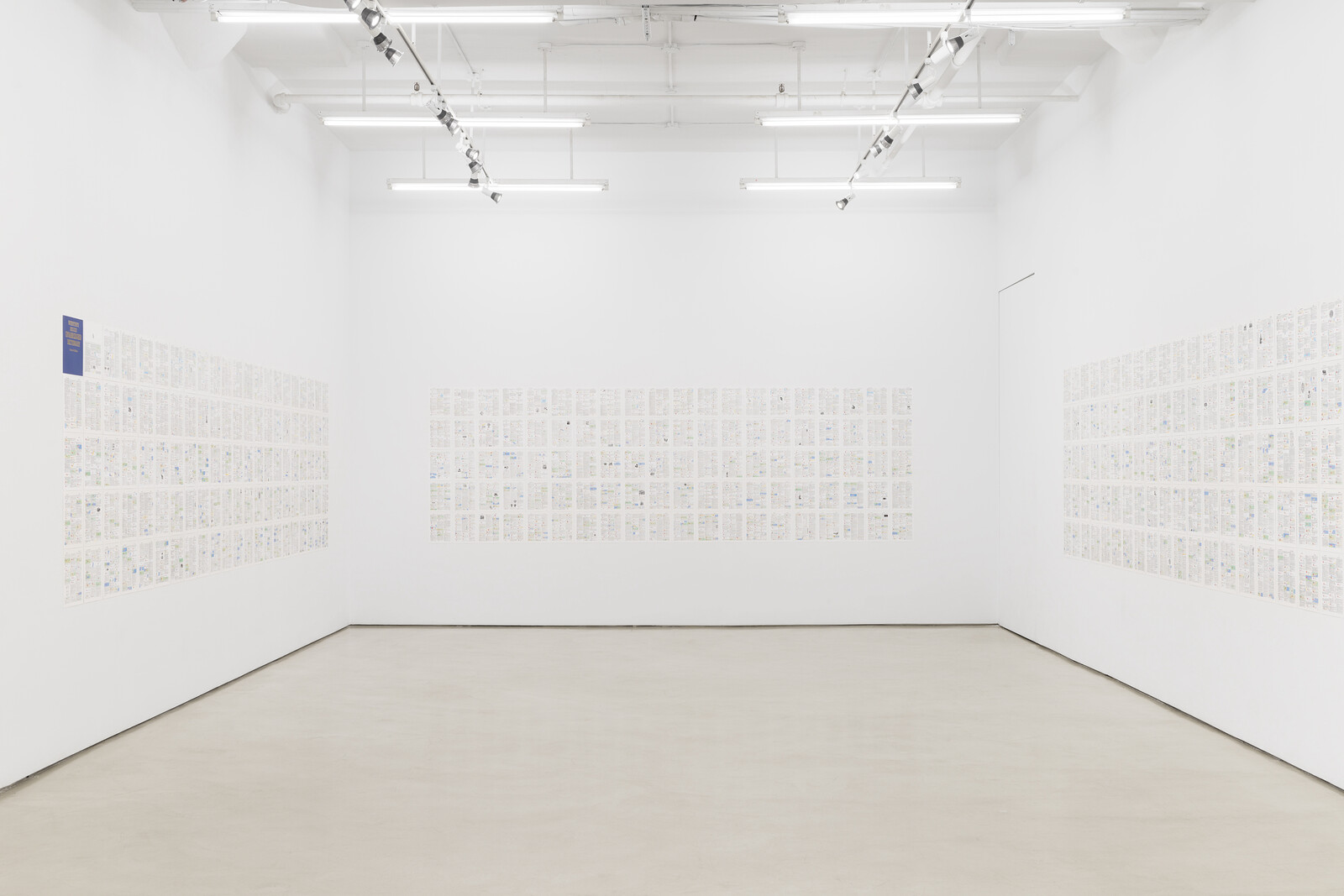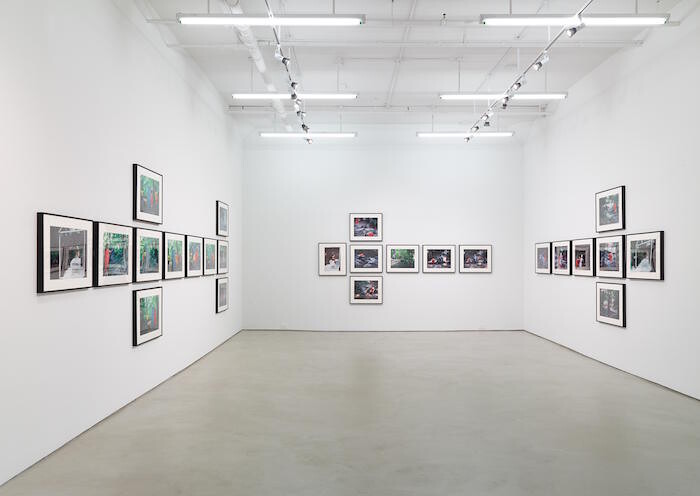Categories
Subjects
Authors
Artists
Venues
Locations
Calendar
Filter
Done
February 10, 2023 – Review
Luis Camnitzer’s “Arbitrary Order”
Paul Stephens

Luis Camnitzer’s A to Cosmopolite (2020–22) is a marvel of precisely executed conceptual art—or as Camnitzer might prefer, “contextual art” (a term he has advocated since the 1960s). Writing through a 1972 Webster’s unabridged English dictionary, Camnitzer covers the gallery walls in prints that match each definition to a screenshot of the first search result from Google Maps that corresponds to it. The title of the exhibition is something of an oxymoron: by combining two classification systems, the cartographic and the lexicographic, Camnitzer reveals a myriad of cultural and political interconnections. The search results in A to Cosmopolite are proximate to Camnitzer’s own location in Great Neck, New York, thus making the project personal as well as global. Someone in Camnitzer’s digital orbit named their corporation “Aleatoric Media, LLC,” and that entry, like many others, stuck out to me as a viewer. I found the best way to explore the work was to read, in alphabetical order, every red location name—which took approximately an hour. When a name intrigued me, I consulted the corresponding definition and took a photo with my phone—reincorporating the physical work on the wall into my own personal datasphere. This work is, importantly, a remediation of …
June 30, 2015 – Review
Lorraine O’Grady
Alan Gilbert

In the “Dada Manifesto on Feeble Love and Brittle Love” from 1920, Tristan Tzara famously provided instructions on how to write a Dada poem: get a newspaper and some scissors, snip out individual words and put them in a bag, shake it and then withdraw slivers of text, write down the words in the exact order in which they appear, and—voilà!—poem. Yet even more provocative than the method is Tzara’s claim that, “The poem will resemble you.” Similarly, although William Burroughs utilized the cut-up technique to undermine authorial intention and the way in which information serves as a means of control, the writings he produced in this manner continued to bear the impression of his obsessions: the police, queer sex, death.
Over the course of 26 Sundays in 1977, Lorraine O’Grady took scissors to the New York Times to create a series of text-based works recently on display at Alexander Gray Associates. If Tzara was convinced that his aleatory approach to writing a poem would nevertheless reflect the author, what does this involve for O’Grady, a crucial yet still somewhat overlooked artist of Caribbean descent who produced an important body of work in the late 1970s and early 1980s, including “Mlle …
